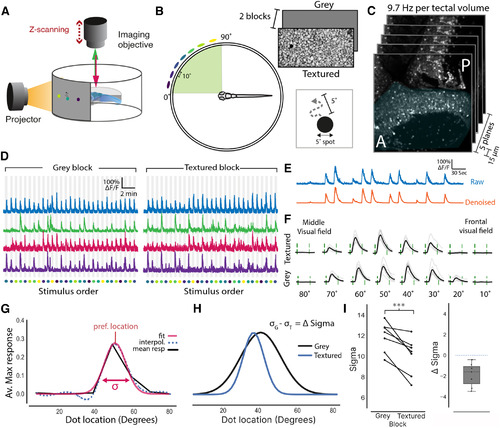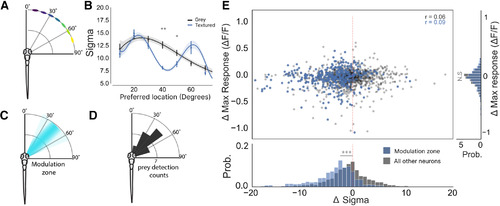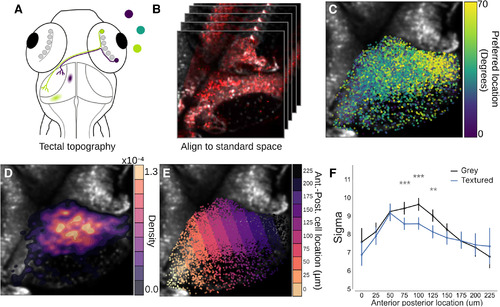- Title
-
Topographically localised modulation of tectal cell spatial tuning by complex natural scenes
- Authors
- Sainsbury, T.T.J., Diana, G., Meyer, M.P.
- Source
- Full text @ eNeuro
|
Presenting stimuli over a textured background sharpens the spatial tuning of tectal neurons. |
|
Contextual modulation takes place in a spatially restricted region of visual azimuth. |
|
Modulated neurons are topographically distinct within the tectum. |
|
Visual experience has no effect on the development of contextual modulation in the optic tectum. |




